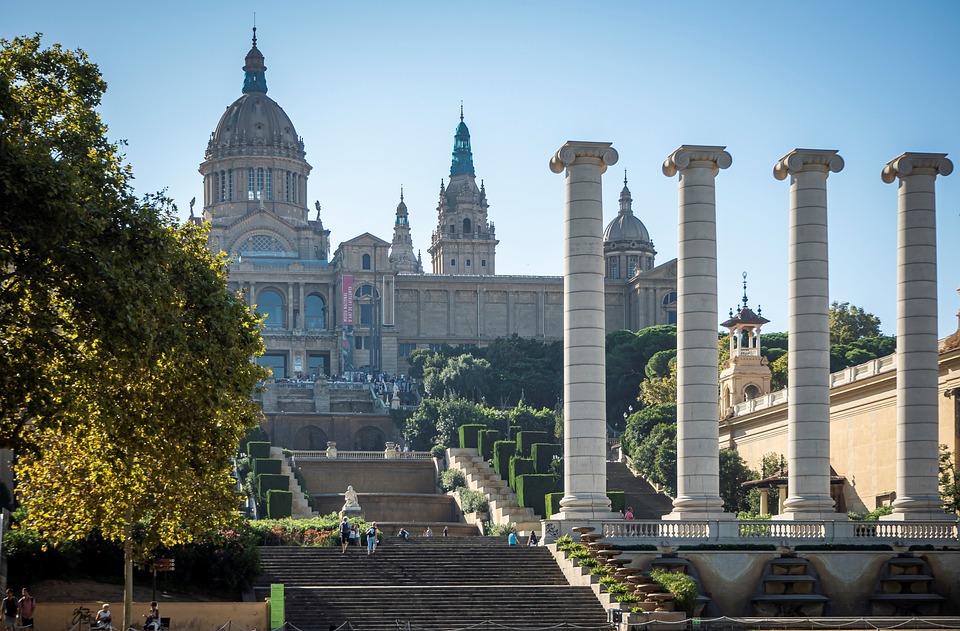A Tale of Two Cities: Comparing the Rise and Fall of Rome and Constantinople
Introduction
The histories of Rome and Constantinople represent two of the most significant urban developments in the ancient and medieval worlds. Both cities served as capitals of great empires, were centers of culture and commerce, and faced various internal and external challenges that led to their respective rises and eventual declines. This article aims to explore the complexities of these two cities by examining their foundations, governance, culture, military might, and the factors that contributed to their eventual falls.
The Rise of Rome
Origins of the City
Rome’s founding is steeped in mythology, traditionally dated to 753 BCE. According to legend, Rome was established by Romulus after he killed his brother Remus. However, the actual roots of Rome can be traced to a collection of settlements on the Palatine Hill and surrounding areas, influenced by Etruscan and Greek civilization.
Republican Ascendancy
In 509 BCE, the Roman Kingdom transformed into a Republic, marking a significant shift in governance. The Republican era was characterized by a system of checks and balances, with power shared among elected officials such as Consuls and Senators. This period saw the expansion of Rome’s influence through military conquests and alliances, as well as developments in law and governance.
Imperial Expansion
The Roman Empire reached its zenith in the 2nd century CE, under Emperor Trajan. It spread across Europe, North Africa, and parts of the Middle East, implementing an extensive network of roads, facilitating trade and communication. Cultural influences from conquered territories began to amalgamate with traditional Roman customs, producing a unique Roman identity characterized by law, architecture, and citizenship.
Economic Prosperity
Rome’s economy flourished through agriculture, trade, and slave labor. The establishment of provinces allowed for resource extraction and distribution, which not only fed Rome’s large population but also enhanced its wealth. The Pax Romana, a period of relative peace that lasted over two centuries, allowed for economic stability and growth.
Cultural Flourishing
The cultural achievements of Rome were monumental. Art, literature, and philosophy thrived during this time. Figures such as Virgil and Cicero produced works that are still studied today. Roman architecture, featuring monumental structures like the Colosseum and the Pantheon, showcased their engineering prowess and contributed to Rome’s legacy.
The Rise of Constantinople
Origins and Foundation
Constantinople, originally the Greek city of Byzantium, was strategically located on the Bosporus Strait, connecting the Mediterranean and Black Seas. In 330 CE, Emperor Constantine I, seeing the strategic value of Byzantium, refounded and expanded it as Nova Roma, later to be known as Constantinople.
Christianization and Political Stability
Constantine’s conversion to Christianity marked a significant turning point for the city and the Roman Empire. Constantinople became the seat of the Eastern Orthodox Church, fostering a sense of unity among Christians. The blend of Roman governance with Christian elements established a unique political and cultural identity for the city.
Economic Foundations
Just as Rome flourished, so too did Constantinople, thanks in part to its geographical position. Trade routes converging in the city allowed for immense wealth accumulation. The city’s economy relied on trade, craft, and agriculture, and it became known for its luxury goods and silk production.
Cultural and Intellectual Revival
The Byzantine Empire, centered in Constantinople, was also a continuation of Roman culture, enriched by Greek philosophy and literature. Byzantine scholars preserved ancient texts, contributing to the Renaissance in Western Europe centuries later. Artists excelled in mosaic work, liturgical art, and architecture, culminating in the construction of the Hagia Sophia.
Comparative Governance
Roman Republicanism vs. Byzantine Autocracy
Rome’s republican system emphasized civic virtue and citizen participation, albeit limited to freeborn males. In contrast, the Byzantine Empire adopted a more autocratic system, where the Emperor held absolute power. This shift reflected the changing dynamics of power and governance over the centuries.
Military Structures
Both Rome and Constantinople had formidable armies, but their structures differed. The Roman legions were highly disciplined, organized, and included diverse ethnic groups from conquered territories. In contrast, the Byzantine military evolved to focus on defending territory through fortifications and diplomacy, as well as utilizing mercenaries.
Legal Frameworks
Roman law has had a lasting impact on Western legal systems, with codified statutes and legal principles that have survived through the centuries. The Byzantine legal system, particularly the Codex Justinianus, aimed to regulate a more diverse population while influencing later legal traditions in both the East and the West.
The Decline of Rome
Internal Strife
The decline of Rome can be attributed to various internal factors, including political instability, economic troubles, and social fragmentation. Leadership crises and civil wars eroded the effectiveness of the government. The division between the Western Roman Empire and the Eastern Roman Empire further weakened Rome.
Barbarian Invasions
External pressures, particularly from barbarian tribes such as the Visigoths, Vandals, and Huns, culminated in invasions that devastated Roman territories. In 410 CE, the Visigoths sacked Rome, a symbolic blow to the once-mighty empire. Eventually, in 476 CE, the last Roman emperor was overthrown, marking the traditional date for the fall of the Western Roman Empire.
Cultural and Economic Decline
As trade networks deteriorated and urban centers shrank, the economy collapsed. The once-thriving culture of Rome fell into decline as literacy decreased, and cities became less significant. The loss of population and tax revenue further weakened Rome’s ability to defend itself.
The Decline of Constantinople
Economic Strain
Like Rome, Constantinople also faced economic difficulties. Over-reliance on trade and a weakening agricultural base led to economic vulnerabilities. The city struggled to compete with emerging trade routes and powers, such as Venice and Genoa.
Military Challenges
By the 15th century, the Ottoman Empire posed a significant threat to Constantinople. The city’s fortifications, once impenetrable, faced challenges against the advancements in military technology, especially artillery. The defeat at the hands of the Ottomans in 1453 marked the end of the Byzantine Empire.
Cultural Isolation
The weakening of religious and political power led to cultural isolation. As European Renaissance movements began to flourish, Constantinople found itself increasingly cut off from these developments, contributing to its inability to adapt to new realities.
Conclusion
The tales of Rome and Constantinople are complex narratives of ambition, power, and eventual decline. While both cities rose from humble beginnings to become bastions of culture, governance, and economy, their paths diverged in governance structures, military strategies, and the socio-political environments that ultimately led to their falls. The comparative study of these two great cities not only illuminates the historical context of their rise and fall but also provides invaluable lessons regarding the impermanence of power and the cyclical nature of civilization.
References
[1] “The Rise of Rome: A History of the Roman Republic.” Cambridge University Press, 2023. [2] “Constantinople: Capital of the Byzantine Empire.” Oxford University Press, 2023. [3] “Comparative Empires: A Study of Governance and Militarization in Ancient Civilizations.” Routledge, 2023. [4] “Cultural Exchanges Between Rome and Byzantium: The Continuity of Tradition.” American Historical Review, 2023. [5] “The Fall of Rome: An Analysis of Internal and External Forces.” Journal of Ancient History, 2023. [6] “The Ottoman Conquest of Constantinople: A Turning Point in World History.” Historical Review World Press, 2023.This article serves as a broad overview of the two cities, their influential roles in history, and the many factors contributing to their respective rises and declines.


























Add Comment